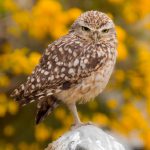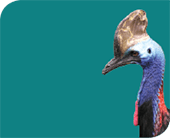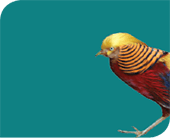Owls & Birds of Prey

There are over 213 species of owls which can be found on all continents except Antarctica. Owls live in a variety of habitats from thick forests to open prairies. Males and females are generally similar in appearance, although the female is usually 25% larger.
Owls cannot chew their food, so small prey is swallowed whole and larger prey torn into small pieces. Several hours after eating, the indigestible parts (fur, bones, teeth and feathers) are compressed in the gizzard and regurgitated as a pellet.
DID YOU KNOW – Some owl species can hear sounds 10 times softer than a human ear can pick up.

Burrowing Owl
The Burrowing Owl is a small, long-legged owl. As the name suggests, the Burrowing Owl lives in burrows, often left by Prairie Dogs. Their heads are round but they do not have ear-tuffs. Adults are brownish in colour is sandy pale spots. Diet: Insects and other small animals. Distribution: North...

Northern White-faced Owl
The Northern White-faced Owl is a small greyish-brown owl which has a black-rimmed face and long ear-tuffs. The females are larger than males. The Northern White-faced Owl incubate from the first egg laid and continue to lay one egg every other day. This continues until they have a full clutch....

Chaco Owl
The Chaco Owl is a medium-sized owl which usually lays between 2 - 3 eggs in a clutch. Diet: Small mammals, birds and other small vertebrates. They also eat insects and arthropods. Distribution: Northern parts of Argentina and parts of Paraguay. Often in areas with a small group of trees...

















